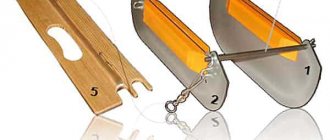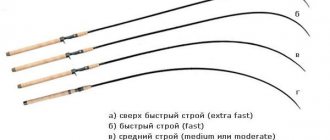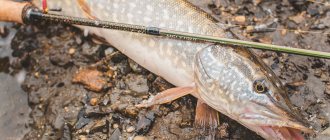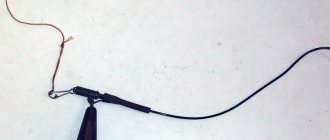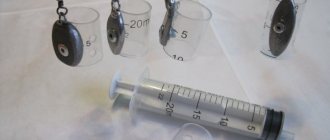Trolling
Many fishermen have seen boats passing along a river or pond at low speed with spinning rods thrown into the water. This is trolling fishing for predatory fish. Despite the apparent simplicity of fishing, trolling has many nuances that affect the success of fishing. When using several fishing rods at the same time, it becomes necessary to distribute the baits in depth and width. In some cases, this is done to avoid overlapping of the spinning lines. In other cases, this is necessary for fishing at different horizons. One such device is a trolling boat or glider.
Types of boats
There are several options for boats that differ in design or method of attachment to the fishing line.
- The independent boat is a conventional design, equipped with a bright flag. After a bite or hook, the line is released from the device, and the boat sets off for free swimming. Therefore, after fishing, the fisherman needs to go in search of his assistant.
- Separate gear is required for the second type of boat. The structure is attached to a separate cord, and fishing lines from spinning rods (2-3 fishing rods) are mounted to it using clothespins. When a bite occurs, the fishing line from a certain rod is released from the clamp, and the boat with the rest of the gear continues to work.
- An interesting design was proposed by the American company “BigJon”. The boat is equipped with an additional carbine, and a stopper is installed on the main fishing line. Thanks to this installation, the device is not lost when fishing, and the fish is brought to the boat without interference.
- A type of boat are gliders. They can consist of 2-3 plates equipped with floats, or have a wide base with a loaded keel. Such a device can easily accommodate rigs from several spinning rods. The glider is attached to a separate cord, which is attached to a mast or stand with a reel. Usually two devices are used (on both sides) to stabilize the boat.
[rs]
Spinning rod for trolling - what a rod should be like, basic parameters and buying tips.
How to choose the right reel for a trolling rod - read the detailed guide.You can learn more about drop-shot spinning equipment by following the link to Primanki.com.
Homemade boat for trolling with your own hands
A classic trolling boat is quite easy and simple to make with your own hands. A device with a length of 23 cm, a height of 8 cm and a thickness of 1.5-2 cm works well. It is better to make several blanks at once, then it will be possible to make 2 designs with minor changes. To get started you will need:
- 2 hardwood boards;
- 2 aluminum plates;
- 2 clothespins for fishing line (fishing);
- 2 carbines with swivels;
- stainless steel rod 2 mm thick;
- lead strip;
- fasteners.
The sequence of operations is as follows:
- Wooden blanks 25 cm long and 10 cm wide are cut. The nose part is sharpened smoothly at a distance of 5-8 cm. A U-shaped cut is made in the back part.
- Through the formed “ears” through holes for the pin are drilled.
- L-shaped holders for clothespins are made from an aluminum plate.
- Using a short piece, the holder is screwed with self-tapping screws to the boat, approximately 8-10 cm from the edge of the bow.
- A pin with a swivel and a carabiner is mounted in the tail section.
- Wooden parts are varnished.
- The clothespin is attached to the holder with a bolt and nut.
- Lead strips are attached to the lower end of the boat with self-tapping screws. When properly loaded, the structure should protrude 1/3 out of the water.
Now one of the boats can be floated on the left side, and the other on the right side.
How to increase your fish catch? ">
Over 7 years of active fishing, I have found dozens of ways to improve the bite. Here are the most effective ones:
- Bite activator . This pheromone additive attracts fish most strongly in cold and warm water. Discussion of the bite activator “Hungry Fish”.
- Increased gear sensitivity. Read the appropriate manuals for your specific type of gear.
- Pheromone -based lures .
primanki.com
Trolling fishing involves the use of a large amount of special, specific additional equipment , both for organizing the movement of the boat, the location of the equipment, and in the gear itself. In this review, I will try to touch on the most popular and useful technical “tricks” that allow you to diversify trolling fishing , making it more comfortable and effective.
I will not spill water, I will simply name an element of trolling equipment or equipment and briefly describe its characteristics and purpose.
Trolling rod holders . Since the essence of trolling fishing is towing baits behind a moving boat, the gear is not in the hands of the fisherman, but is permanently placed in the stern of the craft.
The fisherman's hands are busy steering the boat. And only in case of a bite, the fisherman grabs the spinning rod and begins to fight the fish. At the same time, the boat is controlled by a partner. This is why it is more convenient and safer to fish together.
As for rod holders , there are a great variety of designs.
Try to choose holders that are as simple as possible, without any frills. The more primitive the design of the clamps, the minimum of parts, the more reliable such rod holders are. Sinker bait deepeners . Trolling wobblers with great diving depth, heavy spoons and jigs.
But the characteristics of the bait do not always correspond to the depth at which you want to fish it. For example, how to troll a wobbler with a depth of 2 m at a depth of 8 m??? The easiest way is to add additional weight to the rig. The result will be something similar to a tackle with a retractable leash.
Also for this purpose, special deepeners are used - Sinkers in the form of a sinker-blade. They are effective when trolling at depths up to 10m.
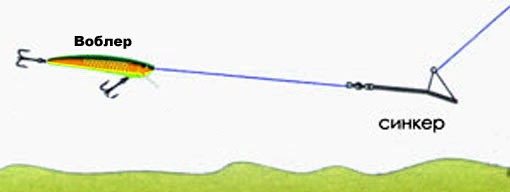
I think the operating principle of the sinker-Sinker is quite clear... The essence of the wobbler is the same. An additional deepening blade, only placed outside the bait. Very comfortably!
Up close, this Sinker looks like this:
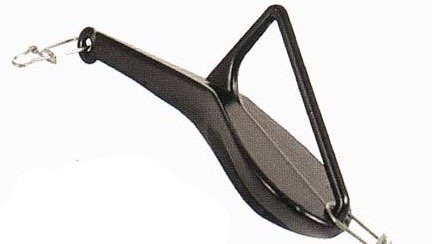
There is also a more advanced version of the deepener - sliding ( Slide Diver ).

The essence of this device is that this deepener can move along the fishing line. When the fish is hooked, the line is released from some of the clamps - the device stops working as a deepener and no longer interferes with fishing.
For the same deepening of trolling baits , only to depths of 30m or more, and moving them away from the boat, so-called Downriggers and Outriggers are used.
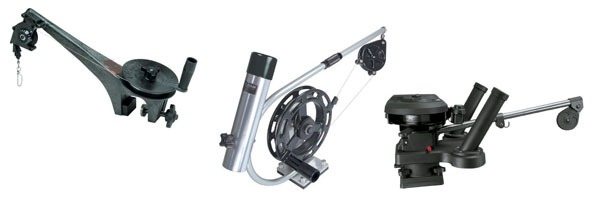
A downrigger is, to put it simply, a winch with a load lowered under the boat on a separate cord. Lines from several spinning rods can be attached to the downrigger at once. In this way, you can lead several baits at different, but clearly defined depths.
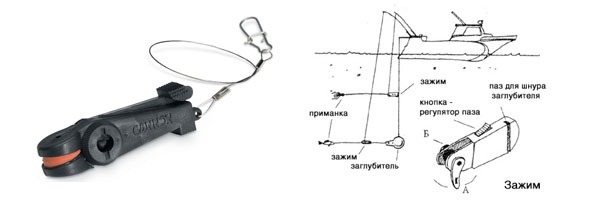
If you need to move the bait to the sides, along the sides of the boat (for example, when fishing at shallow depths, so as not to frighten the fish with the noise from the motor and the wave from the propeller), use Planers.
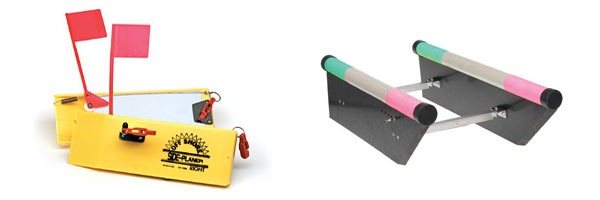
In essence, gliders are a kind of water kite. In any case, the principle is the same. Due to the direction of the angle of attack of the water flow, fishing lines with baits are diverted to the sides from the sides of the trolling boat.
Also, when trolling, additional “chips” are used to attract fish to the bait from long distances . These are the so-called Dodgers and Flashers. The Dodger wobbles like a spinner, plus it makes additional noise and gives off reflections with its holographic ribbed surface (by the way, Dodgers have a variety of coatings).
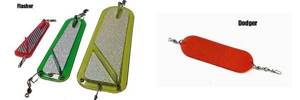
Here, in short, I named the most popular additional devices used when trolling . Yes, a lot of new things. Some English names can break your tongue. But if you are planning to seriously master trolling, get into it gradually, it will come in handy!
Source
fish-guide.ru
Weights and rigs Mini trolling glider kit (left + right) (Viewing: 1)
Go to page
The lightest and most comfortable mini-gliders, made using Finnish technology.
Length 240 mm. Made from a special alloy of aluminum and magnesium, which is used in the aviation industry - because of this they weigh almost nothing, but remain very durable. They perfectly move the bait away from the boat when trolling (fishing on the path) and do not interfere with landing fish in case of a bite. In addition, they almost never get torn off on a wave, unlike heavy plastic ones.
I myself have been fishing with such mini-gliders for several years now; it’s a really successful design that works very well. You can see how fishing with this gear works, for example, in this video.
I'll add a description. These are very light and incredibly comfortable mini-gliders. Length 240 mm, while weight is only 131 grams
(along with clothespin), a modified and improved version of the legendary Finnish NORPA mini-gliders based on the results of many years of testing. The ships are industrially manufactured from a special alloy of aluminum and magnesium, which is used in the aviation industry - because of this, they weigh almost nothing, but remain very durable.
These gliders are excellent at moving bait away from the boat.
when trolling (fishing on a path)
at a distance of up to 20 meters
and do not interfere with landing fish in case of a bite. In addition, they almost never get torn off on a wave, unlike heavy plastic ones.
I myself have been fishing with such mini-gliders for several years now and I strongly recommend trying them, this is really the most successful and very correctly working design
. Compared to any factory ones (and I have tried almost all the models on the market in the Russian Federation), this is the most convenient solution for many reasons:
1. Equipped with excellent and very durable Scotty 1182 clothespins
, and not cheap Chinese clips, like other manufacturers. Even at the end of the clip’s service life (which is 1.5-2 years), you can simply replace it with a new one, rather than buying new mini-gliders, as you will have to do when using gliders such as TX-22 and the like, the clothespins for which are You won't find it for sale.
2. Lungs
(by a wide margin this is the minimum weight of all the gliders that I have held in my hands), these boats have insignificant frontal resistance to the oncoming flow and thanks to this they
work perfectly even on a large wave
(they do not dive under the wave and do not shoot back in vain). In addition, with a lightweight mini-glider it is more pleasant to fish.
3. Sensitive.
The behavior of the gliders shows the slightest bites, which means you won’t have to carry a 50-gram perch all your fishing trip, but you’ll get rid of it in time and won’t miss your chance to catch a real fish.
4. To fish with such mini-gliders, it is not necessary to buy an “oak” insensitive spinning rod. Due to the fact that they are so light, you can fish with them using regular spinning rods with a dough of 30-40 g.
5. They move the bait well away from the boat to the side
, which allows you to use several mini-gliders on each side and, if necessary, use the most stubborn wobblers. For example, we fish with 8 spinning rods (4 mini-gliders on each side) and nothing gets tangled. It is only important to leave space in the wake so that there is room for fishing, and to follow the course, avoiding sharp turns.
6. Bright
from above and from the side,
visible in the water even at night
- it’s easier to separate sides from another crew and easier to find a lost mini-glider. Moreover, from the side of the fish (i.e. from below) they are practically invisible.
7. These mini gliders are much cheaper than the popular Walley and the like.
, and they are actually better.
Mini-gliders of “left” and “right” design. Price per pair. I will ship to any point in the Russian Federation by SDEK or by mail at the buyer’s expense.
How to start trolling?
The most original trollers have adapted devices such as “boat” and “glider” for such fishing.
The width of the zone fished using such devices exceeds that when fishing with a spinning rod.
Trolling spinning rod differs from the classic one by the presence of a larger number of rings , which, moreover, have the same diameter. On the butt of the rod there is a cross-shaped thread that allows you to attach the rod to a “cup holder”.
It’s also a good idea if the reels have a line consumption counter . To make counting more convenient, it is better to take a counter in meters - this will eliminate the need to convert one unit to another. They will be discussed in more detail below.
Model with return mechanism
The classic water snake can only move away from the shore. To return the tackle to the shore, you need to make some effort, especially if there is a fish on the hook. Therefore, fishermen came up with a mechanism that changes the location of the cord attachment point on the boat, and, consequently, its position relative to the current.
If the cord attachment moves from point A to point B, the current begins to push the sled toward the shore. A ship with a “transmission” is called reversible.
At the moment, gear with a return mechanism is used most often by fishermen, because... effectively solves the problem of controlling the position of the boat in the water.
Trolling boat and glider
A boat, also called a glider, is a device for moving spinning equipment away from the boat. They are “right” and “left”, depending on which direction they point the equipment .
There are no differences as such. There are large and small gliders. Bigger people need more equipment. For such gliders you need to have a trolling reel and a mast or a targa - a mount for a fishing rod.
After the bite, the boat is not stopped, so the fish soon ends up in the wake of the boat. However, the gliders themselves are quite cumbersome - after biting on the middle device, you need to move the rest, so there are more mobile versions of this gear - the so-called “ships”.
Operating principle
At first glance, the trolling boat is quite simple to use for retrieving bait. In general, the purchased version and the home-made version do not have any special features in operation, since the mechanism is similar everywhere.
Trolling gliders are objects whose principle is based on the following:
- asymmetry allows you to move away from the fisherman;
- the sinker makes its position constantly vertical;
- The sinker is attached to the fishing line and, depending on many indicators, can move in different directions.
Whether you buy or make homemade minigliders yourself, the choice is yours. Under any circumstances, fishing using trolling with gliders will bring you a sea of emotions and new sensations.
Small (mini) glider
A miniglider, otherwise called a “ship,” is somewhat more convenient than its large brother, since it does not require a mast or similar devices, but is attached directly to the fishing line . In case of catching fish with a medium spinning rod, you do not need to make unnecessary movements, but simply move the system a little and release the line to the appropriate distance. However, this leads to an increase in the cost of gear. So if a large glider is in the range of 4000-6000 rubles, and additional accessories are needed, the total amount reaches 10-15 thousand rubles.
“Boat” costs 600-1000 rubles. Although there is no additional expense for the devices, small gliders often get lost, not much worse off than decoys. Therefore, if you take the average cost of a “ship” as 800 rubles, then multiply it by the number of fishing rods, then, despite the fact that the amount comes out less than that of a glider, but after several replacements as a result of intensive fishing, the amount can even cover the cost of a large glider
Fortunately, you can make a “ship” with your own hands :
- In wooden blanks approximately 25x10 cm, a U-shaped cut is made, this will be the back part. On the opposite side, the end gradually sharpens, starting approximately 5-8 cm from the edge;
- In the rear part, holes are drilled in the “horns” to the right and left of the cut. The pin will be attached there;
- The clothespin holders are made of aluminum plate;
- At a distance of approximately 8 - 10 cm from the bow, the holder is screwed with self-tapping screws to the “ship” with a short piece;
- A pin is installed in the back of the device, to which a swivel and carabiner are attached;
- Wooden parts are varnished;
- Using a bolt and nut, attach a clothespin to the holder;
- The device is surrounded with lead tape, fastening it with self-tapping screws to the lower end part. A properly loaded “ship” should look out of the water by a third.
In addition to the above, there is one more drawback: the “wing” does not detach after a bite, but remains on the fishing line. As a result, this device provides no less resistance than a fish.
Even if these stoppers are present, this makes the tackle more vulnerable, creating extra points for hooks and overlaps.
Making your own miniglider
Sometimes it is not possible to buy a product, your hand simply cannot reach your wallet, because a miniglider is not a cheap pleasure . Then you just need to make mini-gliders for trolling yourself. In order to make this device, you will need:
- two boards that are made of hardwood;
- two plates made of aluminum;
- two clothespins;
- two carbines that have swivels;
- a rod that is made of a special material - stainless steel. The thickness of this rod must be at least two millimeters;
- lead strip;
- fastening parts.
To make it you need to do the following:
- Cut the boards. The length of the boards must be at least 25 cm. As for the width, it must be at least 10 cm. The nose part must be sharpened. The pointing distance should be from five to eight centimeters. As for the back part, you need to make a special cut there, which has a U-shape.
- Drill specific holes to install the stud. They need to be drilled into the “ears formed”.
- Using an aluminum plate, make an L-shaped holder, which will be needed for clothespins.
- Screw the holder about eight cm from the very edge of the bow. It must be screwed on with self-tapping screws.
- Mount the stud into the tail section. The hairpin must have a swivel and a carabiner.
- Coat all wooden parts with varnish.
- Attach the clothespin to the holder. Use a bolt and nut.
- Attach lead strips to the bottom of the mini trolling glider. To do this, use self-tapping screws.
Conventionally, gliders can be divided into two groups . The first group is small. The second group is large. However, they differ not only because of size.
So, let's take a closer look at large gliders. They need more equipment than little ones. In order to use them, you need to install trolling reels on the boat. Trolling reels are mounted on a special trolling mast, or on a targa - a rod holder.
The task of the gliders is to spread the line of equipment on the sides of the boat. Using a special clip, a large glider is attached to a line that is wound on a trolling reel and then moved away from the craft. Using clothespins, fishing lines are attached to the cord. As for the distance and sequence, they are chosen by the fisherman himself. It depends on the goals that the fisherman intended to achieve, as well as on weather conditions, currents and other factors associated with fishing.
When a bite occurs, the fish, having pulled out the fishing line, is placed in the wake of the boat . It should be noted that the boat continues to move. But this device has a significant drawback - it is not very mobile. It should also be noted that it is quite expensive and will require additional actions from the fisherman.
As for small gliders, the so-called minigliders, they have a number of advantages. Which are: low cost, small size, minimal resistance and ease of operation. There is no need to build masts and reels for them. That is, there is no need to build powerful gear.
Fishing technique
Let's look at the basic algorithm for fishing with a boat:
- The fishing line is released to the required length and the “boat” is fixed on it;
- The rod is inserted into a special holder, the clutch is loosened;
- We do the same with the rest of the fishing rods. The distance between the “ships” should be 5 – 10 meters .
prevent annoying tangles and overlaps :
- With each more distant rod, the release of the bait should increase by about 5 meters
- The closer the boat is to the boat, the greater the depth should be. This not only prevents tangling, but also allows you to fish different layers of water.
- The inner coil needs to be reeled in during sharp turns.
When using large gliders, you need to carefully study the place : in calm and clear water, the fish are usually more cautious and afraid of the boat. Therefore, you should release the gliders further than during waves. This will reduce the timidity of the fish, since the bait will not follow the projection of the wake stream.
Advantages of boats and advantages of minigliders
The use of small gliders (“ships”) has a number of advantages :
- Long-distance casting of even weightless bait in any weather conditions ;
- There is no need to change the entire circuit during repeated casts;
- Even in waves, the bait is carried out more evenly ;
- The system is quickly disassembled and assembled .
Large gliders also have their advantages :
- Large fishing area;
- No unnecessary devices;
- Possibility to increase speed or load ;
- You can fish lower horizons;
- Possibility of using more fishing rods.
These do not knock against each other, and the rigid action of the rod allows you to pull the line out of the clothespin when you come across a small fish that is unable to pull out the line on its own or you need to inspect the tackle.

